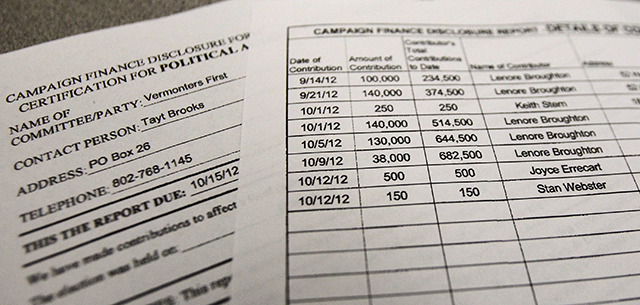But voters aren’t so polarized on the issue. A report released yesterday by the Public Campaign Action Fund, a nonprofit focused on campaign finance reform, says Americans across the political spectrum are in favor of scaling back the amount of money going into campaigns. Another indication of the same sentiment can be found in Colorado and Montana, where ballot initiatives supporting a constitutional amendment to overturn Citizens United were approved by an overwhelming percentage of the electorate — 74 percent in Colorado, 75 percent in Montana.
“This is the one area where Democrats and Republicans — people who voted for Obama or Romney, people who voted for Democrats or Republicans — are very close together in their views,” said Democratic strategist Stan Greenberg, whose polling organization worked with the Public Campaign Action Fund to survey voters. “People believe in limits [on spending]. It’s almost a universal position in the country — that there should be limits.”
See charts after the jump.
The chart above shows that the majority of voters, regardless of party affiliation, are unhappy that the elections were so costly. By a nearly two-to-one margin, voters chose the first statement over the second — 54 percent “strongly agreed” that money undermines democracy, while about 65 percent of voters “somewhat agreed” with the first statement.
The chart below, shows that voters, regardless of party affiliation, feel that lawmakers consider the viewpoints of special interest groups and campaign contributors before all others when they vote on legislation.
To fix the problems dealt illustrated in the first two charts, the majority of voters support reforms in the way elections are paid for, as indicated in the chart below. When the surveyor included the $6 billion price tag for the 2012 elections in the question, the majority of voters responded that there was a need to “overhaul” the system
Public Campaign Action Fund and Democracy Corps, a group run by Greenberg and fellow Democratic strategist James Carville, surveyed 1,000 likely voters on Nov. 6 and 7. You can take a look at the full survey results here.





